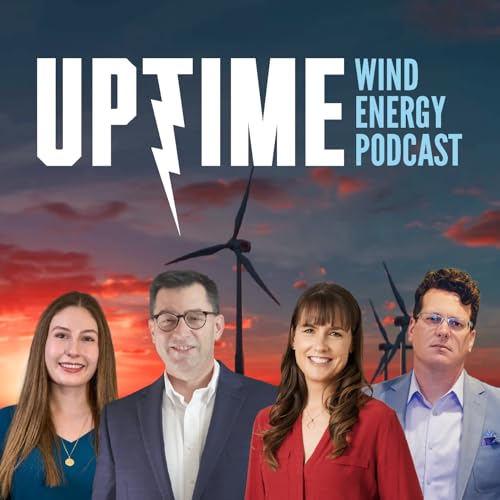Allen covers a federal judge striking down the US wind energy moratorium, calling it arbitrary and capricious. Plus Maryland opens offshore wind bids for 8.5 gigawatts, Great British Energy announces a £1 billion supply chain investment, and Nordex lands its largest US turbine deal in 25 years with Alliant Energy in Iowa.
Sign up now for Uptime Tech News, our weekly email update on all things wind technology. This episode is sponsored by Weather Guard Lightning Tech. Learn more about Weather Guard’s StrikeTape Wind Turbine LPS retrofit. Follow the show on Facebook, YouTube, Twitter, Linkedin and visit Weather Guard on the web. And subscribe to Rosemary Barnes’ YouTube channel here. Have a question we can answer on the show? Email us!
You know… they said wind power was finished.
On day one of the new administration, an executive order landed on desks across Washington.
Stop the turbines. Halt the permits. Shut it down.
Seventeen states watched their clean energy investments… billions of dollars… suddenly frozen.
The order called it a pause. Critics called it a burial.
But here is what happened next.
Federal Judge Patti Saris of Massachusetts looked at that order. She called it arbitrary. She called it capricious. And on December ninth… she threw it out.
Wind energy… is back.
The very next day after that federal judge struck down the wind moratorium… Maryland issued a new invitation for offshore wind bids. The state wants eight-point-five gigawatts of offshore wind by twenty thirty-one. Deadline for proposals… January sixteenth.
You see… wind power now provides ten percent of America’s electricity. It is the United States’ largest source of renewable energy.
Now… three thousand miles across the Atlantic… something else was stirring.
In Britain, a state-owned company called Great British Energy unveiled a one billion pound plan. That is more than one-point-two billion dollars. Three hundred million pounds available right now… for turbine blades, transmission cables, and converter stations.
The goal… not just to install clean energy… but to build it. On British soil. With British workers.
CEO Dan McGrail put it simply. We are investing in British industry.
Now… back here at home… in the cornfields of Iowa.
The Nordex Group just announced the largest turbine deal in its twenty-five-year American history.
Up to one hundred ninety wind turbines. Manufactured in West Branch, Iowa. That facility reopened just this past July.
The customer… Alliant Energy. The capacity… more than one thousand megawatts. Enough electricity to power hundreds of thousands of homes.
CEO Lisa Barton said they chose a local provider on purpose. “This decision promotes substantial economic development throughout our service area.”
Development continues in the US for onshore and offshore wind — although it will take more time offshore wind to grow.
But pay attention to what is happening in the UK with GB Energy as offshore and onshore wind production is being built within its borders.
Having attended the UK Offshore Wind Supply Chain Spotlight 2025 event in Edinburgh last week, there is massive capability in the UK.
And the rest of the world should learn from their efforts.
That’s the wind energy news for the 15th of December 2025.
Join us tomorrow for the Uptime Wind Energy Podcast.
 Dec 23 202531 mins
Dec 23 202531 mins 2 mins
2 mins 28 mins
28 mins 39 mins
39 mins 2 mins
2 mins Dec 11 202529 mins
Dec 11 202529 mins 33 mins
33 mins 3 mins
3 mins
